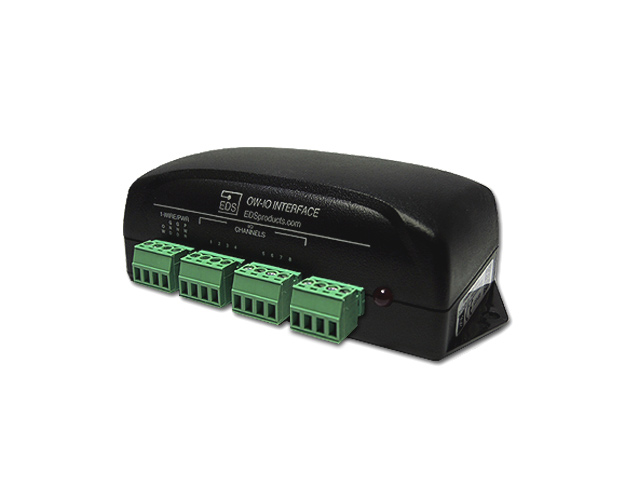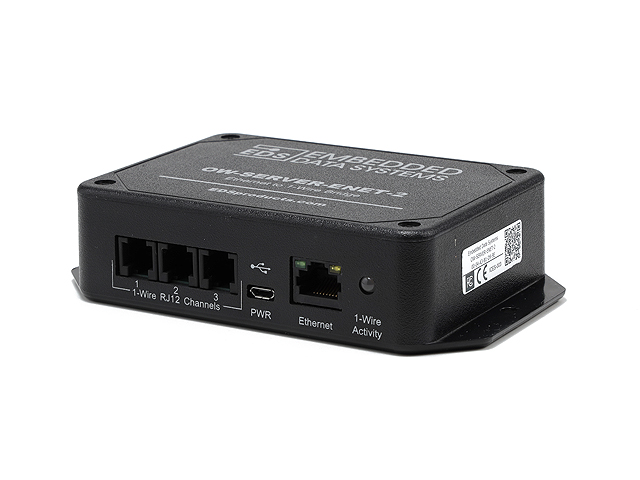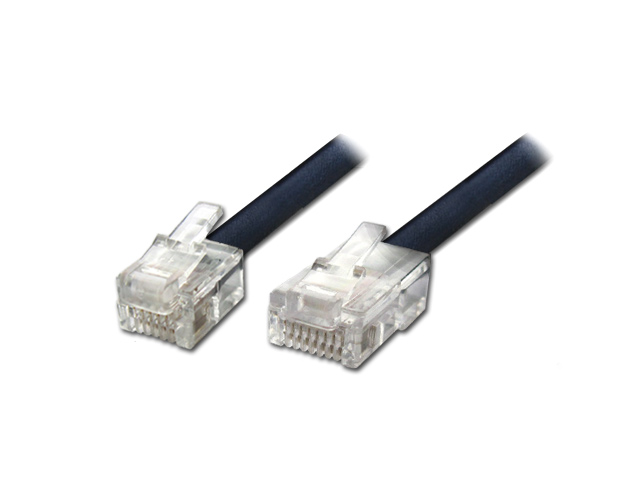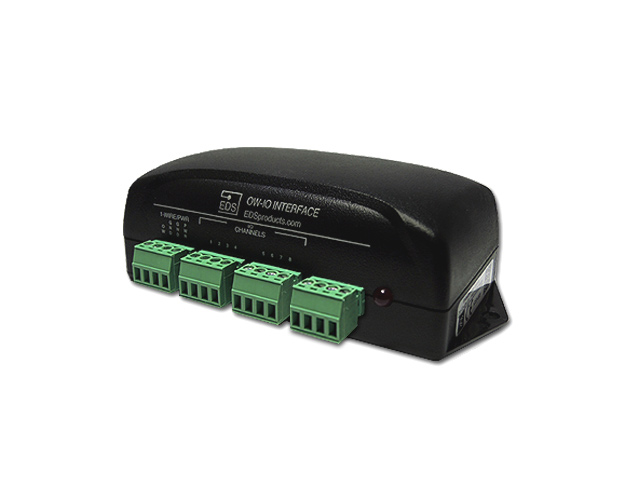The 1-Wire Octal (8 Channel) Input device offers an innovative way to monitor up to 8 analog points. In addition to the current reading, each point maintains a minimum value and a maximum value. High/low alarms may also be set independently for each input.
The 1-Wire Octal Input also includes an LED and conditional search support. Additionally, an optional latching relay provides further flexibility for alarm notifications and control applications. These features combine to offer a flexible and efficient system for monitoring and controlling numerous data points throughout a 1-Wire network. The conditional search support allows a host adapter to quickly identify whether any alarm parameters have been met; and the LED and optional latching relay can be configured to behave in a variety of ways:
- Activate when an alarm becomes active and automatically deactivate when the alarm is cleared.
- Activate when within alarm parameters and deactivate when within normal range.
- Independently controlled
The nearly instantaneous automated responses made by the LED and optional relay allow appropriate reactions (activate fan/alarm siren/etc) to occur before the monitoring application is even aware of an alarm. The Octal input has been designed to simplify the reading and controlling process; and therefore any general-purpose 1-Wire host adapter is able to read the analog points. All of the data is contained in five 32 byte memory pages which are updated in real-time. More in-depth information on the memory format is available within the datasheet.
Features
- Eight 16-Bit analog input channels
- 0-10V and 4-20mA options available
- Static protected inputs
- Readings include minimum, maximum, peak and alarm values
- Uses 1-Wire Communication Protocol
- Supports Conditional Search with user-selectable conditions
- Compatible with all general purpose 1-Wire host adapters
- Pass-through connector for easy daisy-chaining of sensors
- Latching Relay may be controlled independently or by alarm status
- LED may be controlled independently or change due to alarm status
- Applications include thermostatic controls, industrial systems, flow meters, consumer products, or any system in which discrete control or monitoring is necessary
* The time from a change in input voltage to viewing the result on a computer consists of many delays in addition to the conversion time (i.e. time to read the device on the 1-wire bus, computer processing time). Alarms, peak, minimum and maximum values are computed for each reading, so these parameters have an update rate of 8 * 120ms = 960ms.
** Input voltages outside this range is permitted, but will not read correctly.

















